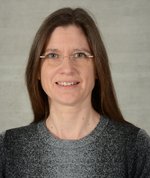Software solutions for the digital position investigation of geometries
The RASAND laboratory aims at the research and development of software solutions for the digital position analysis of geometries. In this field, research and industrial practice are to be combined. On the one hand, this means that the issues dealt with are oriented towards industrial practice. All algorithms and data structures developed by us will be integrated into our own software library RASAND, which is to be used in industry in the long term. A further goal of RASAND is the education of doctoral students in this field. High-quality research work is to be carried out in the laboratory, which will lead the employees to a doctorate.
Designing vehicles virtually - save costs for building real prototypes
Software solutions for digital prototyping are researched and developed in the Rasand laboratory. When planning a new vehicle in the automotive industry, engineers first design all components on the computer. In the so-called Digital MockUp, they are then checked for their functional and spatial requirements, both individually and in combination. Geometrically, each component is given by a set of triangles that approximate its surface. The verification is done virtually by computer simulations, since the construction of real prototypes is very expensive.
Collisions between components - Detecting errors in the design
An important aspect of the Digital MockUp is to check that the components do not collide with each other, i.e. that they do not occupy the same installation space. The collisions between components that occur frequently in practice sometimes show the engineers relevant errors that require a design modification of the components. However, the majority are irrelevant for the engineers. A frequent example are collisions involving screws, bolts or clips. Their task is to attach components to each other, and the resulting conflicts are intentional.
Neural networks for 3D CAD data - qualified evaluation of collisions
In the GeoCADUp project, research is being conducted on AI-based static classification and evaluation of collisions between components. For this purpose, neural networks based on point clouds or images of the 3D CAD data are suitable. The neural network LocALNet developed in the project achieves one of the world's best results for the classification of 3D CAD data based on point clouds in an academic competition on the ModelNet40 dataset of the University of Princeton. Image-based nets have already been successfully trained to classify small parts such as screws, nuts and clips, which can have very different characteristics.
Digital assembly planning - avoid collisions between components
The avoidance of collisions between components also plays a major role in digital assembly planning. First of all, an assembly sequence of the components must be determined. In so-called path planning, a collision-free assembly path is then found for each component from its starting position outside the vehicle to its installed end position in the vehicle. In the past, Rasand has developed and implemented geometric algorithms for fast collision and tolerance calculation between components and, based on this, for path planning for 3D CAD data. The algorithms for path planning are specialized on narrow spaces, which are often found in a densely packed installation space.
Path planning in the near and far range - Consider fastening elements
The path planning for real components is currently being researched in the Assembly Planning project. Near their installed position, in the so-called close range, components are often unavoidably in collision with their surrounding geometry due to their fastening elements, e.g. cast-on movable clips. In addition, the fastening elements are often responsible for rotational movements during assembly. The software developed in the project considers cast-on fasteners. No other academic or commercial software is currently able to do so. For the path planning in the distant area following the planning in the close range, suitable assembly paths to the body address stations are found.
Assembly planning - part of the Discover Industry Truck
Since autumn 2019, our assembly planning has been part of the Discover Industry Truck, which drives to schools in Baden-Württemberg to get pupils interested in the MINT sector. In the dismantled truck, the working world of MINT professions is shown on 100m2 exhibition space. In the converted station on the subject of digital assistants, the pupils solve a nail puzzle in a race against the computer.
![[Image: shutterstock 2474543597 Hero Images on Offset] bachelor studierende angewandte mathematik und künstliche intelligenz freuen sich. bild shutterstock 247454359 hero images on off set](/fileadmin/Dateien/Mathematik/_processed_/b/b/csm_shutterstock_2474543597_d63d3f1ee7.jpg)
![[Image: HFT Nicola Wolpert] Logo rasand](/fileadmin/Dateien/Mathematik/_processed_/8/b/csm_rasand_logo_54dce2abd7.jpg)
![[Image: Schloss Dagstuhl]](/fileadmin/Dateien/Informatik/_processed_/b/3/csm_Schloss_Dagstuhl_1e1de0b31e.jpg)



